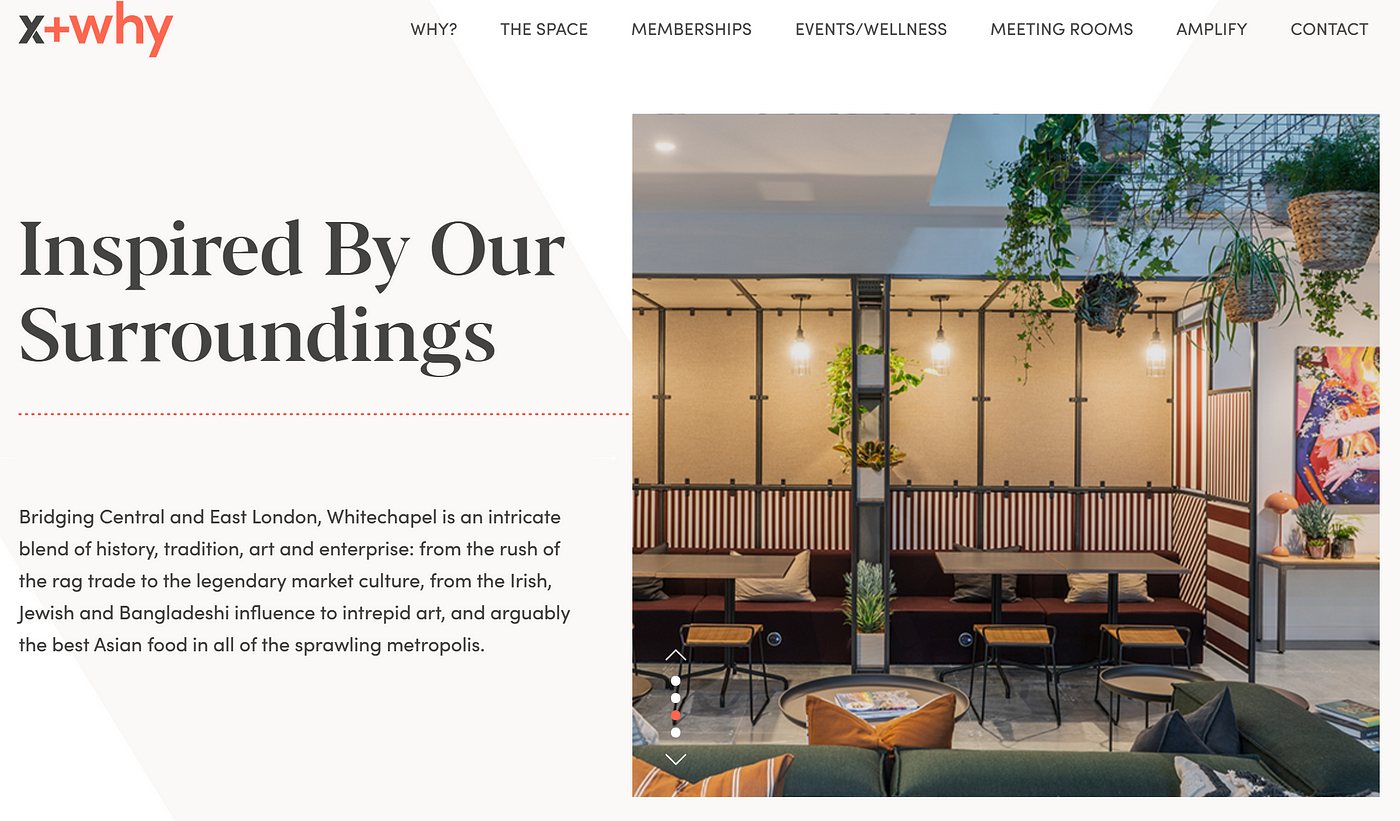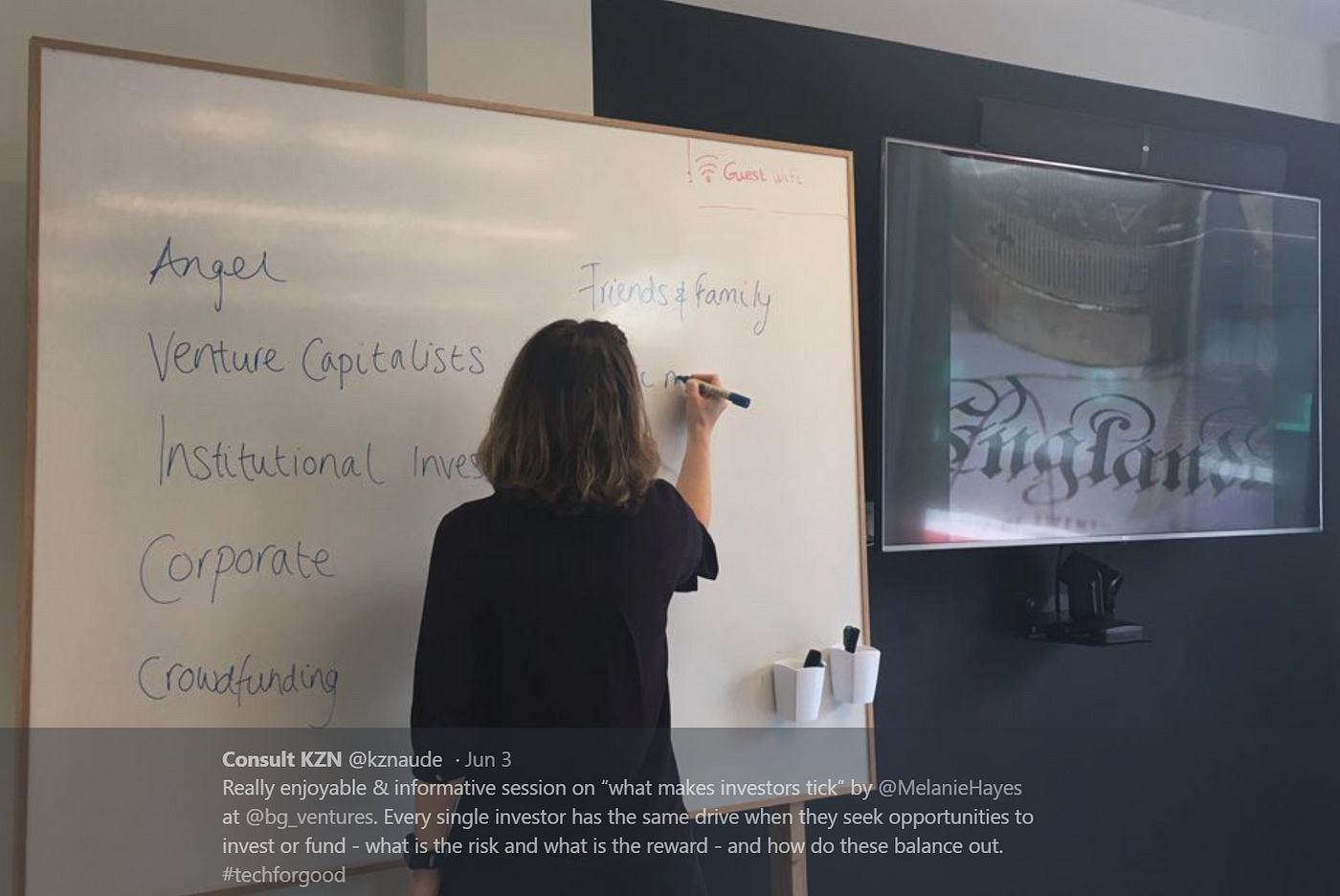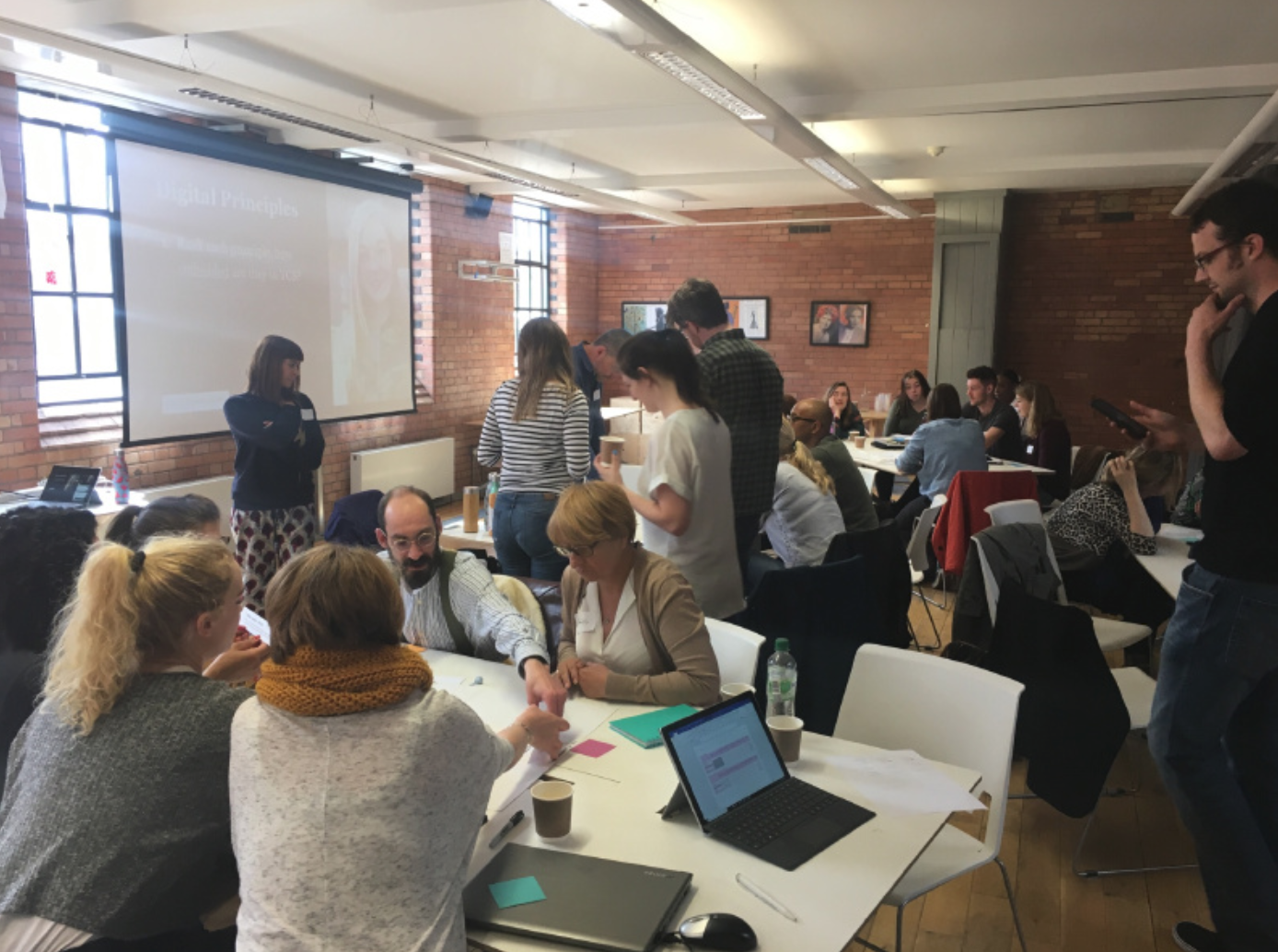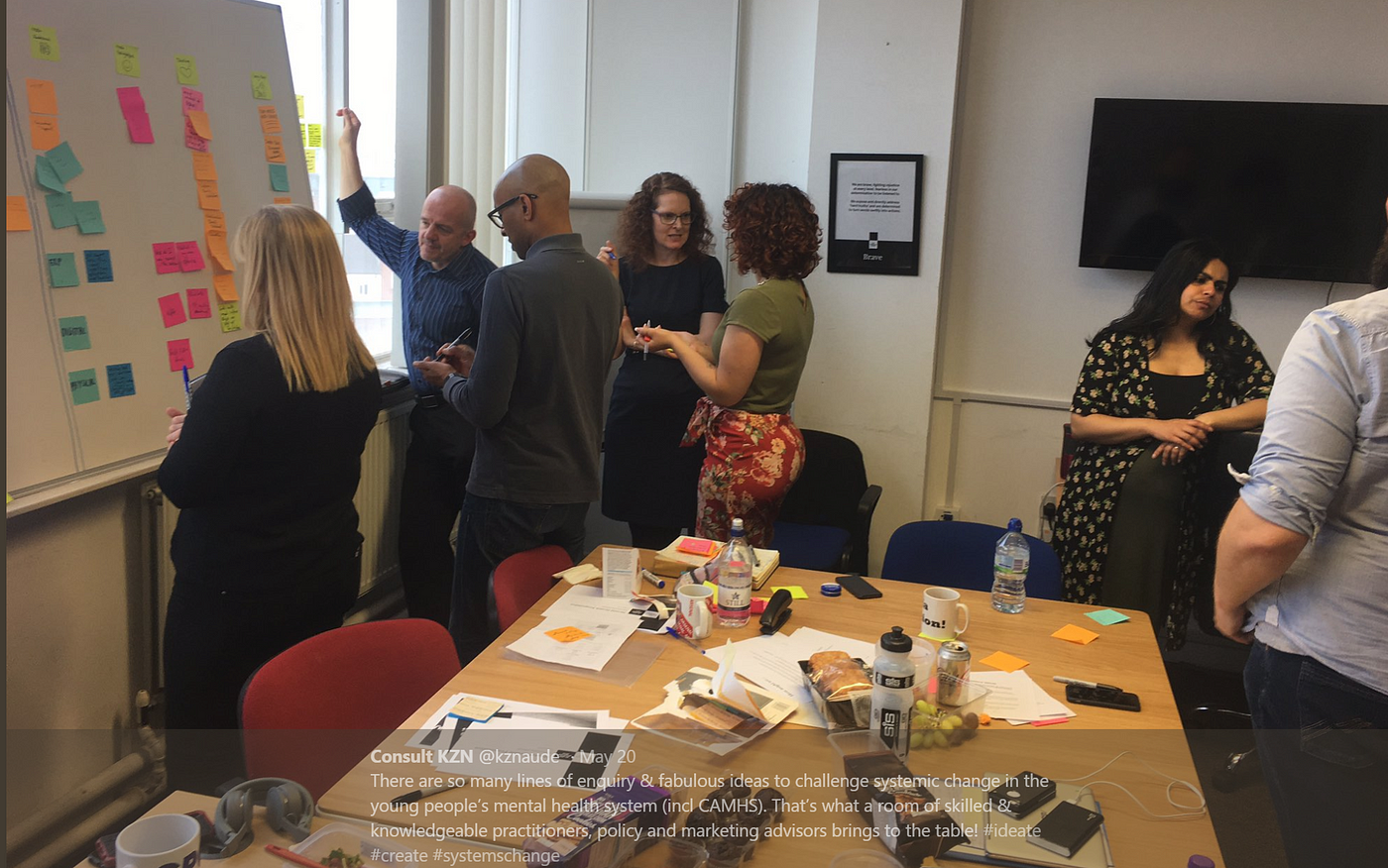I’ve always been one to blog, but it’s been now and then when something bothers or excites me, and I have something to say about it. Check it out. I reckon I need to hone this skill and share more regularly. Taking inspiration from Cassie Robinson. and my colleague at The Children’s Society with her Friday ‘fluffy egg’ e-mails, I’ve seen how it can help both communicating what I’m learning, but also in help me actually reflect on what I’m doing. I’ve also just read Jenny Vass’s What (on earth) are Weeknotes — which I would advise reading if you’ve still question marks above your pretty little head. I’ve been told I go at a hundred miles an hour and need to recalibrate my action vs reflection balance. So I’m going to aim to do this every week or every couple of weeks, trying not to make a religion out of it — because then it becomes a mundane task and I really want it to have meaning. This as also been published on medium, well, because everyone uses that.
WHAT WE’VE BEEN UP TO
I kicked off the week with breakfast with my friend Ché Ramsden, Innovations Manager at Amnesty International UK. Apart from us gurgling about her little one and sharing about how innovation and ‘test and learn’ is working in our respective organisations, we spoke about the wider innovation community in the sector — and how we would love to do more sharing and learning across it (see more on this later). Hopefully soon we will look at setting up another innovation community meet-up. Watch this space.
As part of my role at The Children’s Society (TCS), I manage a groundbreaking partnership with Bethnal Green Ventures (BGV), in which social tech ventures are sponsored and supported by TCS on the 13 week accelerator programme. I’ve been doing this for 2 years now and I can honestly say it’s probably the best part of my job. BGV has just recently moved into a new co-working space in Whitechapel, alongside companies like Centre for Acceleration Technology (CAST) and a number of other well known start-ups.
I must just go on a tangent for a second here to say how inspired I am not just by this co-working space — but by the vision of the founders. Yearning to create something more imaginative and meaningful than classic co-working, ex-corporate lawyer Rupert Dean and property designer and developer Phil Nevin decided to think greater than the daily grind. The duo became obsessed with the notion of ‘Why’. Why do we do what we do? Why does it matter? And what is the formula behind happy and successful business? I feel this mindset is what makes the difference — we should all be driven by asking these questions of ourselves on a daily basis. For Phil and Rupert, all answers pointed to purpose:their mission became to unite, inspire and amplify purpose-driven businesses. I feel like I need to applaud!
A couple of days this week was spent finalising and kicking off my workplan for a new set of commissioned work for an Academy Trust in South London. I say I do things like this in my spare time but I don’t really have any spare time! I’ve just finished a consultation and business case for the Trust — about the inclusion of a sixth form in one of their secondary schools. I’ve never done that kind of work before so it was great to help them out as they put the case to the DfE, and learn something new in the process! I’m terribly excited about the next phase of work, which involves me digging deeply into my fundraising skill pockets. More on this in the coming weeks.
WHAT WE’VE LEARNED
We are just over halfway on the BGV accelerator, now focusing on investors and partnerships — my favourite part of the programme. If myself and the teams learned one thing from the ‘what makes investors tick’ session, it was that every single investor is thinking about exactly the same thing: RISK AND REWARD. And our job, is to show them how these two balance. We discussed in depth each type of investor and how they tend to give. Ventures Capitals, Angels, Crowdfunding, Corporates, Grant givers like Trusts and Foundations. But for all these, your research into them is going to be most important. All investors will usually publish an investment thesis / approach / mandate which gives you the information about the risks they’re willing to take and the rewards they’re looking for. Always, always — Ask questions first and pitch second. And for those that have been turned down at some point, investors also get it wrong. Bessemer Venture Partners, for example, have published their anti-portfolio. These are investments they declined, each of which they had the opportunity to invest in, and each of which later blossomed into a tremendously successful company. The likes of which include AirBnB, Apple, Ebay and Google.
The Children’s Society is also finalising our Digital Fund application to the National Lottery Community Fund. I know I am not alone in feeling that the journey on this one has been frustrating. After being told we had moved into the second phase of applications by e-mail — and that somebody will be in contact — we waited 2 months…2 months of chasing to get a phonecall in to look at next steps. When finally we got the phonecall in the diary, we were told we had one week to turn the full proposal around to get to the July panel. Having dealt with NLCF before on many occasions — this, in fact, did not surprise us. And luckily, we had already embarked on detailed user and design research for our proposal. ALso, to be fair to the Lottery, this fund is in its essence, a ‘test and learn’ activity. They’ve never done this before, and as with us, are still learning about how it could work better.
The Children’s Society is in an interesting space in this regard. We have acknowledged that this path to true transformation will require a lot of hard work, organisational commitment, senior leadership and trustee buy-in and investment investment investment. As one of my colleagues who will hate to be named, stated: “If we look at it starkly — at the organisational level, we have made little progress in making the fundamental changes necessary to enable basic good digital practices by default. Our specialist design capacity is siloed, our investment in digital is not remotely proportional to the scale of the challenge, and we are structured in such a way that discourages multidisciplinary working. We might think we are doing the right thing, but we aren’t yet doing it well, and we aren’t moving at pace”.
However, my colleague is a recovering perfectionist. I think deep down there is optimism and we all feel that our movement is in the right direction. We are highly focused on systems change (addressing the root causes of social problems, which are often intractable and embedded in networks of cause and effect) and are training and encouraging people to test and learn in this space. We are growing our approach to service design and digital through our practice base (frontline practitioners and policy advisors). We are embedding agile and lean start-up working practices in parts of the organisation (I’ve written another blog about this)— and it’s all working. But it’s working fairly slowly. And commitment it patchy. Perhaps knowledge is patchy too. Maybe it comes back to that “why” question. Why do we do what we do? Why does it matter? For Phil and Rupert from X+Why it was “what is the formula behind happy and successful business?” For us it’s more like “what is the formula behind a strong charity making change for young people?”
We have some of the answers and others will emerge the further we build. I’ve been encouraged reading Digital Transformation at Scale alongside other books / resources to fill my mind with this stuff and see how it’s being done elsewhere. The launch of a large-scale digital transformation programme in national government led by the Government Digital Service (GDS) in 2010 set the standards for digital ways of working in the public sector (being launched this July for ALL government services, not just digital ones — basically now, all public facing transactional services MUST meet the standard). These standards, building on 10 underlying design principles, demand that new services — whether developed internally or by external suppliers — implement fundamental good practices. These include:
- understanding user needs,
- doing user research,
- having multi-disciplinary teams,
- iterating and improving
- testing the end-to-end service
New digital services are assessed against these criteria and are not allowed to launch until they pass. My colleague Adam Groves (who I would highly recommend following) stated this in an internal memo: “As a result of GDS’ work, the UK government rapidly came to be recognised as a world leader in digital services. Moreover, what started as a change at national government is increasingly being taken to local government. Authorities such as Croydon, Hackney, Essex, Brighton and Camden are applying the lessons from GDS into their contexts. This includes the development of a Local Government Digital Service Standard. Just as the national standard began with digital services but will now apply to whole services, we might expect a similar shift at the local level. That is certainly the aim of those who are driving this agenda”. We hope to see this approach sweeping the charity sector soon.
WHAT WE CELEBRATE
Spent the day on Wednesday at the Impact Hub in Birmingham with our very own Innovation Community — about 30 people from across the organisation who are innovating: affecting change across systems and tackling problems for young people in new ways. We also had all of the practitioners on our systems changers programme in attendance (see what they are learning).
We talked about digital disruption, capturing change and learning for innovation, service design with young people in mind, case clinics and action learning sets for problem solving.
I was super duper proud of my team — the seedlings of the innovation community from fundraising and supporter engagement perspective — who put together a really engaging exercise around one of our ‘in development’ Christmas fundraising products. They gave people the opportunity to do some assumptions testing and think about how they would do a quick and early stage prototype to test the assumption with only £100 in hand.
We also had Imandeep Kaur from the Impact Hub, who helped facilitate our systems changers programme, talk, and thoroughly inspire the group.
One of the best development days I’ve had in a long while — and as I said earlier, one which I hope we can open up further.
MY NEXT WEEK
I’m excited for London Tech Week. I look forward to this every year. I’ve booked into a number of events including:
- AND Chat: Five Common Challenges In Agile Transformation (by AND Digital)
- Innovations, Tech and Espresso Martinis (Taylor Vinters)
- Capgemini’s Ethical AI discussion: what it means for you and your customers and how to address it
- Techfest Main Stage: Tom Cheesewright | High Frequency Change
The other big thing going on this week is the ‘download session’ on our mapping of the challenges in the systems focused on mental health. We’ve spent out time doing discovery research into these systems, the challenges and key issues — and then where best we feel The Children’s Society and partners can make a difference.
It’s been unwieldy at best — and for someone that likes things neat, cut and dried — I’ve had to put my OCD in my pocket. Having now done our first ideation session, we will be looking at the additional lines of enquiry generated, the list of solutions and how the group thought we could prototype and test these and readying of R&D propositions to take to market off the back of this.
Lastly, pretty psyched for a session being run for our Supporter Engagement senior leaders on Wednesday by a guy called Rob Woods who founded Bright Spot Fundraising. People who know me know I’m pretty cynical about this stuff in general — but this looks positive. It looks practical and interactive. These sessions have been designed to help senior managers understand and embody leadership behaviours aligned with The Children’s Society’s Supporter Engagement approach and will be based on The Three Keys To Supporter-Focused Leadership, the research report Rob created for the Commission on the Donor Experience.
The three themes are vision, people and culture. The memo says: “Rob will explain the areas in which over many years he has noticed the way that excellent leaders do things differently to others. Using real examples and stories Rob will bring these to life and, as a group, participants will explore which of these tactics they’d each like to test in their own work”. Groovy.







